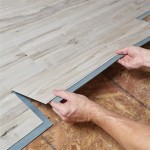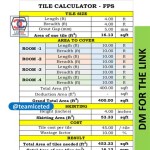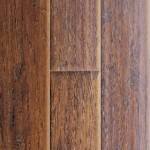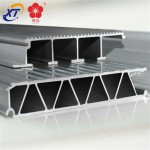Hardest Hardwood Flooring Types: A Durability Guide
Hardwood flooring remains a popular choice for homeowners due to its aesthetic appeal, longevity, and potential to increase property value. However, not all hardwoods are created equal. Their resistance to dents, scratches, and general wear and tear varies considerably. Understanding the hardness of different wood species is crucial for selecting a flooring option that meets the demands of a specific lifestyle and environment. This article provides an in-depth exploration of some of the hardest hardwood flooring types available, examining the properties that contribute to their durability and suitability for various applications.
The hardness of wood is typically measured using the Janka hardness test. This test quantifies the force required to embed a steel ball with a diameter of 0.444 inches to half its diameter into the wood. The resulting measurement is expressed in pounds-force (lbf). A higher Janka rating indicates a harder, more durable wood species. It's important to note that the Janka rating is just one factor to consider when choosing hardwood flooring. Other properties, such as grain pattern, stability, and moisture resistance, also play significant roles in overall performance.
Understanding the Janka Hardness Scale
The Janka hardness scale provides a standardized method for comparing the relative hardness of different wood species. It is crucial to understand that this scale is not absolute but comparative. A wood species with a Janka rating of 2000 lbf is not necessarily twice as hard as one with a rating of 1000 lbf. The relationship is more complex, and even small differences in Janka rating can be noticeable in terms of dent and scratch resistance over time. This measurement helps consumers make informed decisions, particularly for high-traffic areas or homes with pets and children. It is vital to consider the Janka rating in relation to the expected use and potential wear and tear of the flooring.
When evaluating the Janka scale, it's also vital to remember that the wood's finish also contributes to its overall durability. A high-quality, durable finish can significantly enhance the scratch and wear resistance of even a moderately hard wood. Conversely, a poorly applied or low-quality finish can diminish the performance of even the hardest wood species. Therefore, the Janka rating should be considered in conjunction with the quality of the finish.
Furthermore, the Janka hardness test is conducted on dry wood samples. The moisture content of wood can significantly affect its hardness. Wood that is too dry can become brittle and more prone to splitting, while wood that is too moist can become softer and more susceptible to dents. It is, therefore, essential to ensure that hardwood flooring is properly acclimatized to the environment in which it will be installed before installation. This acclimatization process allows the wood to reach its equilibrium moisture content, which will help to minimize dimensional changes and maintain its hardness over the long term.
Specific Examples of Hardest Hardwood Flooring
Several hardwood species are renowned for their exceptional hardness and durability. These woods are often preferred for commercial applications and high-traffic residential areas where resistance to wear and tear is paramount. Among the hardest hardwood flooring options, several species stand out due to their Janka ratings and other beneficial properties.
Brazilian Walnut (Ipe) is frequently cited as one of the hardest commercially available hardwoods. Its Janka rating typically exceeds 3600 lbf, rendering it exceptionally resistant to dents and scratches. Brazilian Walnut also boasts excellent stability and natural resistance to decay and insects. Its dark, rich color adds to its aesthetic appeal, making it a popular choice for luxury homes and high-end commercial spaces. However, its density can make it more difficult to install than softer woods, and its cost is typically higher.
Brazilian Cherry (Jatoba) is another highly durable hardwood with a Janka rating of approximately 2350 lbf. It offers a reddish-brown hue that deepens with age, adding character to any room. While not as hard as Brazilian Walnut, Brazilian Cherry still provides excellent resistance to dents and scratches. It is a relatively stable wood, but it can be susceptible to color changes when exposed to sunlight. Proper UV protection can help to minimize these changes. The hardness and density of Jatoba also contribute to its resistance to moisture, making it suitable for areas with slightly higher humidity levels than some other hardwood flooring options.
Santos Mahogany (Cabreuva) presents a Janka rating of around 2200 lbf, making it another robust choice for hardwood flooring. Its color ranges from reddish-brown to purplish-brown, offering a unique and elegant look. Santos Mahogany is also known for its good stability and resistance to decay. This wood exhibits a finer texture than Brazilian Cherry, which some homeowners find aesthetically pleasing. It also offers a cost-effective alternative to some of the more exotic hardwood species without compromising significantly on durability.
Hickory is a domestic hardwood known for its strength and resilience. Its Janka rating typically ranges from 1820 lbf to 2500 lbf, depending on the variety. Hickory offers a wide range of color variations, from light brown to reddish-brown, with distinctive grain patterns. It is a relatively affordable option compared to some of the exotic hardwoods, making it a popular choice for homeowners seeking a durable and attractive flooring solution. Its hardness makes it particularly well-suited for high-traffic areas and homes with active families.
Hard Maple is a popular and widely available hardwood with a Janka rating of approximately 1450 lbf. While not as hard as some of the exotic hardwoods, Hard Maple still provides good resistance to dents and scratches. Its light color and fine grain make it a versatile choice that complements a variety of design styles. It is also a relatively stable wood, making it less prone to warping or cupping. Hard Maple is often used in high-traffic areas and is a good choice for homeowners who prefer a lighter-colored floor.
Factors Influencing Hardwood Flooring Performance Beyond Hardness
While the Janka hardness rating is an important indicator of durability, other factors significantly influence the long-term performance and appearance of hardwood flooring. These include the quality of the finish, the stability of the wood, the installation method, and the maintenance practices employed after installation.
The quality of the finish is paramount. A durable, scratch-resistant finish can significantly enhance the performance of even a moderately hard wood species. Polyurethane finishes are commonly used due to their excellent durability and resistance to abrasion. However, other finishes, such as oil-based finishes, are becoming increasingly popular for their natural look and feel. The choice of finish should be based on the desired aesthetic and the expected level of wear and tear. The number of coats applied and the application method also play a crucial role in the longevity of the finish.
The stability of the wood refers to its resistance to dimensional changes caused by fluctuations in temperature and humidity. Some wood species are more stable than others, meaning they are less likely to warp, cup, or split when exposed to varying environmental conditions. Wood stability is particularly important in areas with significant seasonal changes in humidity. Engineered hardwood flooring, which consists of multiple layers of wood glued together, provides greater stability than solid hardwood flooring. The cross-layered construction of engineered hardwood minimizes the effects of expansion and contraction caused by moisture fluctuations.
The installation method also significantly impacts the performance of hardwood flooring. Proper installation is essential to ensure that the flooring is securely attached to the subfloor and that there are no gaps or uneven surfaces. Improper installation can lead to squeaking, buckling, and other problems. Professional installation is typically recommended, especially for solid hardwood flooring. The type of subfloor and the climate in which the flooring is installed will influence the chosen installation method. Common installation methods include nailing, gluing, and floating.
Regular maintenance is essential for preserving the beauty and extending the lifespan of hardwood flooring. This includes regular sweeping or vacuuming to remove dirt and debris, as well as occasional cleaning with a damp mop and a pH-neutral wood floor cleaner. Avoid using excessive water or harsh chemicals, as these can damage the finish and the wood itself. Promptly clean up spills to prevent staining and water damage. The use of area rugs in high-traffic areas can help to protect the flooring from wear and tear. Taking proactive steps to maintain the flooring will ensure that it retains its beauty and durability for many years.

What Is The Hardest Wood Flooring Ambience Hardwood

Hardwood Flooring Wood Species Logs End

The Hardness Of Hardwood Floors Does It Matter

What Hardwood Floors Are Most Durable Gold Eagle

Types Of Hardwood Floors The Home Depot

Types Of Hardwood Flooring Forbes Home

The Hardest Hardwood Floors Are They Worth It

Types Of Wood Flooring 101 Your Total Guide Floorings

Types Of Hardwood Floors The Home Depot

Hickory Hardwood Flooring Pros Cons Guide
Related Posts








